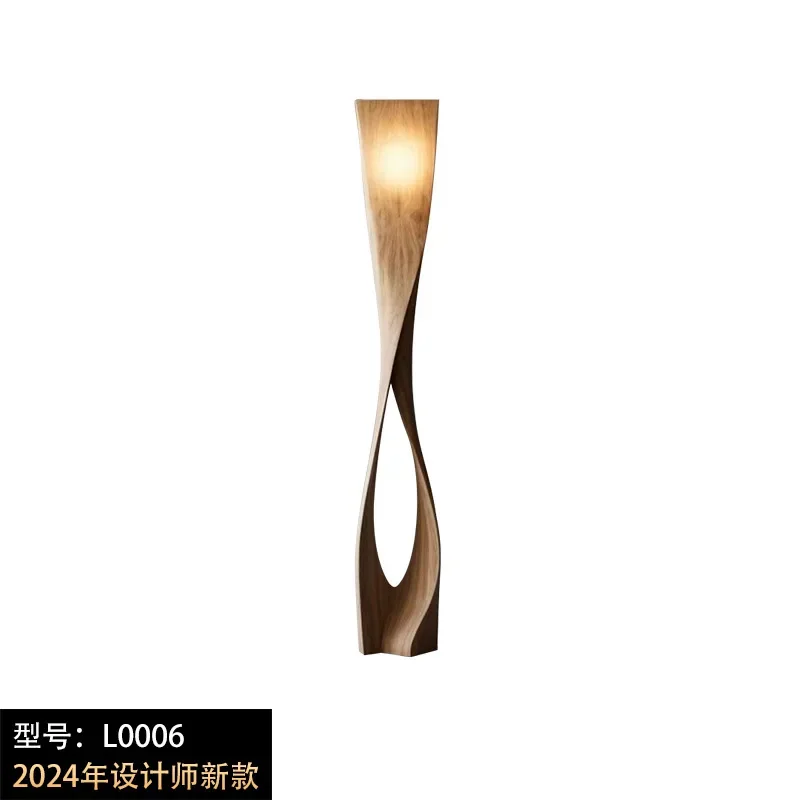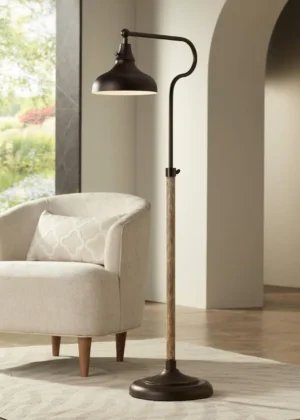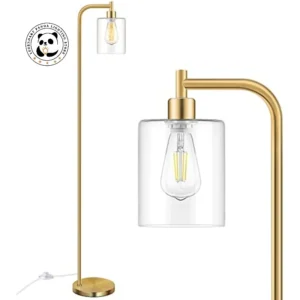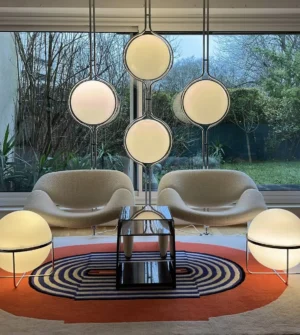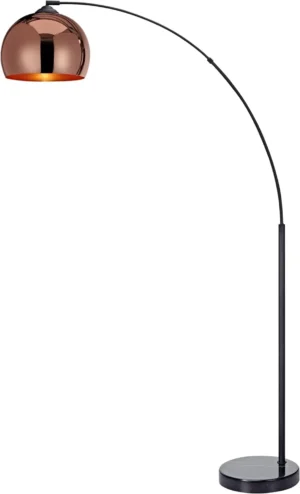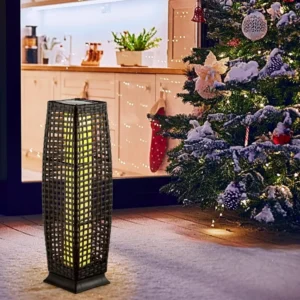Introduction to Arc Floor Lamps: Statement Lighting for Any Space
Arc floor lamps are distinctive lighting fixtures characterized by their curved arm that extends outward and downward from a weighted base, suspending a shade that provides directed illumination. These elegant lamps combine the best of overhead lighting with the convenience of a floor-standing fixture, creating a floating effect that adds both drama and functionality to any space.
The design traces its roots to the iconic Arco lamp created by Italian designers Achille and Pier Giacomo Castiglioni in the 1960s. This revolutionary design transformed how we think about interior lighting by offering a solution that provides overhead illumination without requiring ceiling fixtures or electrical work.
Arc floor lamps have gained immense popularity for several compelling reasons:
- They provide overhead lighting without ceiling installation requirements
- Their adjustable positioning offers versatile lighting options
- The dramatic curve creates an instant statement piece
- They maximize floor space by arching light over furniture
- Their design balances both form and function perfectly
These versatile fixtures work beautifully over sofas for reading light, above dining tables for ambient dining experiences, or beside reading chairs to create cozy nooks. The essential information about choosing arc floor lamps includes understanding their unique attributes and benefits before making your selection.
This comprehensive guide will walk you through everything from design elements and material options to practical placement considerations and expert styling tips—helping you select the perfect arc floor lamp for your space and needs.
Understanding the right arc lamp for your specific needs begins with recognizing the components that make these fixtures both beautiful and functional.
Understanding Arc Lamp Design & Essential Components
To make an informed purchase decision, it’s important to understand the key components that make up an arc floor lamp and how they work together to create a functional, balanced lighting fixture.
The base serves as the foundation of any arc lamp, providing crucial stability and counterbalance to the extending arm. Typically weighted and substantial, bases prevent tipping while anchoring the lamp’s design aesthetic. The stem rises vertically from the base, connecting to the arcing arm and providing structural support for the entire fixture.
The arc or arm is perhaps the most distinctive element—a curved extension that determines both the reach and height of the lamp. Some designs feature fixed arcs, while others offer adjustable positioning. This component creates the lamp’s dramatic silhouette and determines how far the light extends from the base.
At the end of the arc sits the shade, which directs and diffuses light for proper illumination. Shade design significantly impacts both the quality of light and the lamp’s overall aesthetic. Many arc lamps also incorporate adjustment mechanisms—joints, swivels, or height controls—that enhance versatility and allow you to direct light precisely where needed.
Arc lamps come in two primary configurations:
– Single-arc designs featuring one curved arm and shade
– Multi-arm variations with several extending arms and multiple light sources
The relationship between these components is crucial—the length and curve of the arc must be properly balanced by the weight and size of the base to ensure stability, while the shade must complement both functionally and aesthetically.
The variety of material and feature options for arc floor lamps allows you to select a fixture that perfectly balances form and function for your specific needs.
Arc Floor Lamp Styles: Finding Your Perfect Aesthetic Match
Arc floor lamps come in a variety of design aesthetics to complement different interior styles. Understanding these distinct approaches will help you select a lamp that harmonizes with your existing decor.
Modern & Contemporary
– Clean, sleek lines with minimal ornamentation
– Often feature polished metal finishes like chrome or brushed nickel
– Geometric shapes and streamlined proportions
– Frequently incorporate technological features like touch controls or LED lighting
Mid-Century Modern
– Retro-inspired curves and organic shapes
– Warm materials like walnut or teak wood accents
– Often feature tapered legs or elements
– Balanced proportions with nostalgic yet timeless appeal
Industrial
– Exposed hardware and mechanical elements
– Raw materials like blackened steel or distressed metals
– Often feature visible joints, screws, or adjustment mechanisms
– Frequently paired with vintage-style bulbs for added character
Minimalist
– Understated designs with essential elements only
– Clean lines with no excess ornamentation
– Neutral color palette (black, white, natural materials)
– Emphasis on form following function
Traditional & Classic
– More ornate details and traditional craftsmanship
– Rich materials like polished brass or bronze
– Often incorporate decorative elements or textured finishes
– Heavier visual weight with substantial bases
Bohemian
– Eclectic combinations of materials and textures
– Often feature natural elements like rattan, woven materials, or fringe
– More colorful and pattern-rich shade options
– Playful proportions and unconventional shapes
When selecting a style, consider not just your current decor but the lamp’s longevity as your tastes evolve. Finding inspiration from mid-century arc floor lamp designs can help you choose a timeless piece that will enhance your space for years to come.
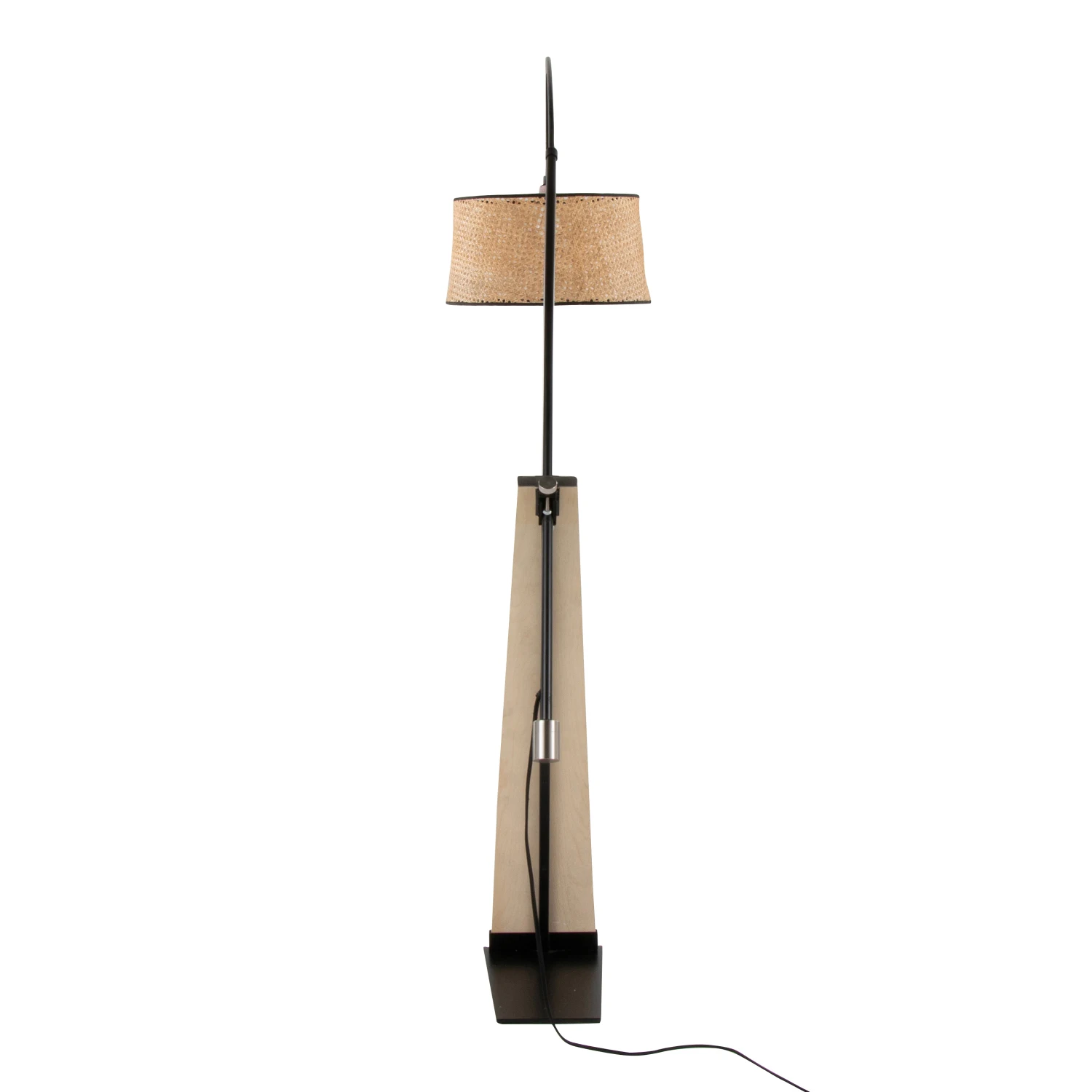
The right arc lamp can either blend seamlessly with your existing aesthetic or serve as a striking counterpoint that adds visual interest. For those drawn to vintage-inspired designs, exploring mid-century and vintage style arc floor lamps offers a wealth of options that combine nostalgic charm with practical lighting.
Material & Finish Selection: Balancing Form, Function & Durability
The materials used in arc floor lamps significantly impact their appearance, durability, weight, and light quality. Making informed choices about materials ensures your lamp will not only look beautiful but perform reliably for years to come.
Base Materials:
| Material | Advantages | Considerations |
|---|---|---|
| Marble | Exceptional stability, luxury appearance, natural uniqueness | Heavy (difficult to move), higher price point, requires careful cleaning |
| Metal | Good stability, variety of finishes, durable | Can show fingerprints (especially polished finishes), may dent if impacted |
| Wood | Warm aesthetic, medium weight, complements natural decor | Less stable than heavier materials, requires proper care to prevent damage |
Arc Arm Materials:
– Steel offers excellent strength and durability but adds weight
– Aluminum provides lightweight flexibility with good structural integrity
– Brass combines visual warmth with structural stability
Popular Finishes:
– Chrome: Highly reflective, modern appearance, shows fingerprints
– Brushed nickel: Subtle sheen, fingerprint-resistant, versatile
– Matte black: Contemporary, dramatic, complements many decor styles
– Brass: Warm tone, vintage appeal, develops patina over time
Shade Materials:
– Fabric shades provide soft, diffused lighting and introduce texture
– Metal shades create directional, focused light with a contemporary look
– Glass offers elegant light diffusion with varying levels of transparency
– Acrylic/plastic provides durability and affordability with lightweight properties
Material choices directly impact maintenance requirements—polished metals require more frequent cleaning to maintain their luster, while textured finishes may hide dust but be more difficult to clean thoroughly. When seeking optimal stability, marble-based arc floor lamps offer exceptional balance for larger arcs that extend further from the base.
Essential Specifications: Size, Dimensions & Adjustability
Understanding the dimensional aspects of arc floor lamps is crucial for ensuring your new fixture will fit appropriately in your space while providing the right illumination where you need it.
Most arc floor lamps range from 60-90 inches (152-229 cm) in total height, with the arc reach extending 30-60 inches (76-152 cm) horizontally from the base. The base footprint typically measures between 10-16 inches (25-41 cm) in diameter, requiring consideration for floor space allocation.
Adjustability Features:
– Height-adjustable stems allow you to raise or lower the entire fixture
– Pivoting or swiveling arms enable you to direct light in different directions
– Telescopic extensions offer adaptable reach for different furniture arrangements
– Adjustable shades provide control over light direction and diffusion
When measuring your space for an arc lamp, consider:
– Ceiling height (allow at least 10 inches/25 cm clearance between lamp and ceiling)
– Horizontal distance from where the base will sit to where light is needed
– Clearance needed for movement around the base
– Height of furniture the lamp will arch over
For taller arcs, increased base weight becomes essential for stability—a general rule suggests that longer arcs require proportionally heavier bases to maintain balance. Finding the right height for your arc floor lamp ensures proper illumination while maintaining appropriate scale with your furniture and room dimensions.
For maximum versatility, consider adjustable arc floor lamps that can be reconfigured as your space or needs change, offering flexibility that fixed-position lamps cannot provide.
Lighting Capabilities & Technology: Illumination That Works for You
Modern arc floor lamps offer sophisticated lighting technologies that enhance both functionality and energy efficiency. Understanding these options helps you select a lamp that delivers the right type and quality of light for your needs.
Light Output Measurements:
– Lumens measure actual light output (brightness)
– Higher lumen count = brighter light
– For reading: 400-800 lumens recommended
– For ambient lighting: 200-400 lumens often sufficient
Color Temperature Options:
– Warm white (2700-3000K): Creates cozy, relaxing atmosphere; ideal for living rooms and bedrooms
– Neutral white (3500-4100K): Balanced light that works well in multipurpose spaces
– Cool white (5000-6500K): Energizing light better suited for task-focused areas
Color Rendering Index (CRI) indicates how accurately a light source reveals the true colors of objects—higher values (90+ CRI) provide more natural color representation, making them ideal for areas where color accuracy matters.
Dimming Capabilities:
– In-line dimmer switches allow convenient brightness adjustment
– Foot switches offer hands-free operation
– Smart home compatibility enables voice or app control
– Three-way switches provide preset brightness levels
Bulb Compatibility:
– LED options offer energy efficiency and longevity (20,000+ hours)
– Incandescent bulbs provide warm light but use more energy
– Halogen bulbs offer bright, white light with moderate energy efficiency
– Smart bulbs add programmable features and color options
For versatile lighting control, dimmable arc floor lamps allow you to adjust brightness levels to suit different activities and times of day, significantly enhancing the lamp’s functionality and your comfort.
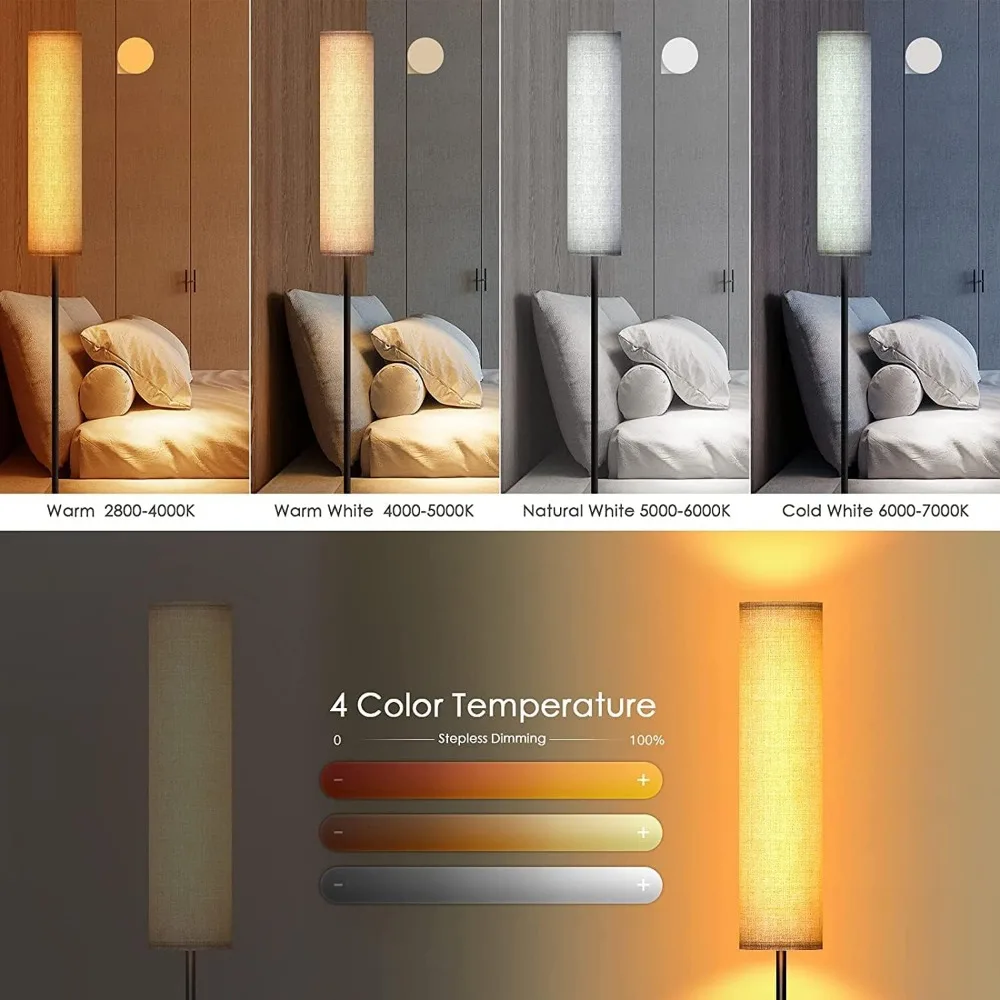
Stability, Safety & Quality Indicators: What Makes a Superior Arc Lamp
The distinctive arching design of these lamps makes stability a paramount concern. Understanding what contributes to a well-built arc lamp helps ensure both safety and satisfaction with your purchase.
Critical Stability Features:
– Base-to-arc ratio: Longer arcs require heavier, wider bases
– For arcs extending 40+ inches (100+ cm), look for bases weighing at least 15-20 pounds (7-9 kg)
– Counterbalance mechanisms help distribute weight properly
– Center of gravity should be designed to prevent tipping even with minor bumps
Key Safety Considerations:
– Look for recognized certifications like UL, ETL, or CE
– Check for secure cord routing that prevents tripping hazards
– Ensure heat management features prevent shade overheating
– Verify that all adjustment mechanisms lock securely in position
Quality Indicators:
– Solid joints that show minimal wobble when the lamp is touched
– Smooth, consistent finishes without bubbling or uneven application
– Weighted base with non-slip padding to prevent movement
– Quality wiring with reinforced connections at stress points
– Smooth operation of any moving parts or adjustment mechanisms
Common issues in lower-quality models include unstable bases that allow the lamp to tip easily, wobbly connections between components, and poor wiring that creates safety hazards or premature failure. Prioritizing arc floor lamps with stable bases is essential for both safety and longevity, especially for models with longer arcs that place more stress on the base.
Perfect Placement: Room-by-Room Arc Lamp Positioning Guide
Arc floor lamps can enhance various rooms throughout your home, but optimal placement depends on the specific function and layout of each space. Following these room-specific guidelines will help you maximize both the practical and aesthetic benefits of your lamp.
Living Room Placement:
– Behind sofa positioning: Place the base 20-24 inches (50-60 cm) behind the sofa with the arc extending over the seating area
– Over coffee table: Center the shade approximately 30-36 inches (76-91 cm) above the table surface
– Reading corner: Position the shade to direct light over your shoulder onto reading material, approximately 26-30 inches (66-76 cm) from the page
Dining Area Considerations:
– Height above table: Position the bottom of the shade 30-36 inches (76-91 cm) above the table surface
– Centering: Align the shade with the center of the table for balanced illumination
– Scale: Choose an arc that complements your table size—larger tables need lamps with longer arcs
Bedroom Placement Options:
– Bedside reading: Position base at least 24 inches (60 cm) from the bed with the shade extending over the bed edge
– Ambient lighting: Place in a corner with the arc extending toward the center of the room
– Space-saving solution: Use in place of traditional bedside lamps to free up nightstand space
Home Office Applications:
– Task lighting: Position to illuminate work surface without casting shadows from your hands
– Computer considerations: Angle the shade to avoid screen glare and reflection
– Multi-purpose flexibility: Choose adjustable models that can be repositioned as work needs change
Finding the best arc lamps for living rooms depends on your specific furniture arrangement and the primary activities that take place in your space. The versatility of arc lamps allows them to serve multiple functions while maintaining a cohesive design element.
Space Planning & Room Considerations: Ensuring Perfect Fit
Before purchasing an arc floor lamp, careful assessment of your space ensures the fixture will integrate seamlessly without creating obstacles or appearing disproportionate.
Ceiling Height Considerations:
– Standard 8-foot (2.4 m) ceilings work best with arcs under 70 inches (178 cm) tall
– For 9-foot (2.7 m) ceilings or higher, taller arcs up to 90 inches (229 cm) can create dramatic effect
– Always maintain minimum clearance of 10 inches (25 cm) between the highest point of the lamp and ceiling
Floor Space Requirements:
– Allow a minimum 14-16 inch (35-41 cm) diameter for the base footprint
– Ensure there’s adequate space for the full arc extension without crowding furniture
– Consider the lamp’s total “footprint” including both base and the area beneath the extended arm
Traffic Flow Analysis:
– Position the base away from main walkways to prevent tripping hazards
– Ensure the arc height provides sufficient clearance for people walking underneath
– Consider how the lamp fits into your room’s natural circulation patterns
Measuring Your Space:
1. Identify where you want the light directed
2. Measure back to where the base could be positioned
3. Check that this distance is within the arc reach of lamps you’re considering
4. Verify ceiling height clearance at the highest point of the arc
5. Ensure furniture placement won’t interfere with the lamp’s position
For larger spaces or dramatic design statements, placement ideas for larger arc floor lamps can help you create impactful lighting that maintains proper proportion and scale with your room dimensions.
Styling & Decor Integration: Creating Visual Harmony
Integrating an arc floor lamp successfully into your decor requires thoughtful consideration of how its design elements relate to your existing furnishings and overall aesthetic vision.
Harmonizing With Existing Furniture:
– Echo materials or finishes from other room elements (match lamp base material to coffee table, for example)
– Consider the lamp’s shape in relation to other furniture—curved arcs complement curved furniture
– Balance visual weight by pairing substantial lamps with substantial furniture
Creating Focal Points:
– Position the lamp where it naturally draws attention
– Use dramatic arc shapes to frame key furniture pieces
– Allow adequate visual space around the lamp to appreciate its silhouette
Color Coordination Approaches:
– Matching: Select finishes that directly correspond to existing hardware or furniture elements
– Contrasting: Choose finishes that provide deliberate counterpoints to create tension and interest
– Neutrals: When in doubt, black, white, or metallic finishes offer versatile integration
Layered Lighting Integration:
– Combine arc lamps with other light sources at different heights
– Use arc lamps to fill lighting gaps between ceiling fixtures and table lamps
– Consider how the lamp’s light interacts with natural light sources throughout the day
Black arc floor lamps offer exceptional versatility for integration with virtually any color scheme or design style, providing a sophisticated silhouette that can either blend in or create striking contrast.
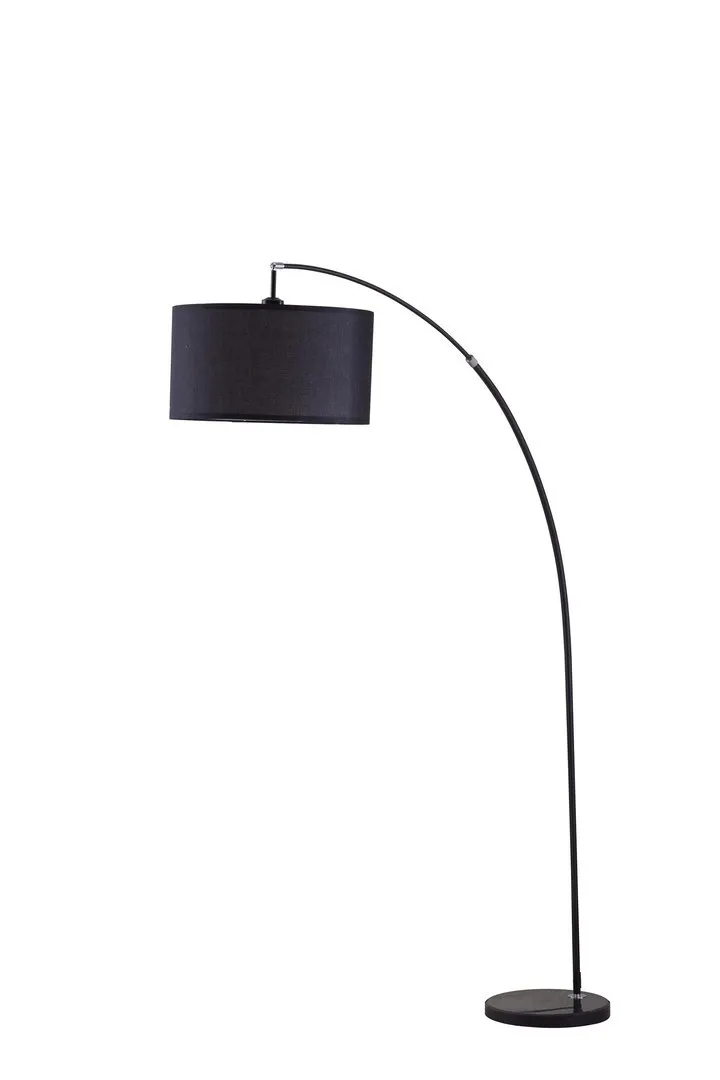
Value, Price & Investment Considerations
Arc floor lamps represent a significant lighting investment, with prices varying widely based on materials, design complexity, and feature set. Understanding what drives these price differences helps you make a value-based purchasing decision.
Price Range Expectations:
| Quality Tier | Price Range | What to Expect |
|---|---|---|
| Entry-level | $100-250 (€90-225) | Basic functionality, simpler designs, lighter-weight materials |
| Mid-range | $250-500 (€225-450) | Better stability, quality finishes, some adjustability features |
| Premium | $500+ (€450+) | Superior materials, exceptional stability, advanced features, designer pedigree |
Key Value Factors Beyond Price:
– Expected lifespan: Quality lamps can last decades with proper care
– Design longevity: Classic designs remain stylish despite changing trends
– Versatility: Ability to work in multiple rooms as your needs change
– Lighting performance: Superior light quality and control capabilities
Material choices significantly impact price—marble bases, solid brass components, and hand-blown glass shades command higher prices but often offer greater durability and aesthetic appeal. Similarly, advanced features like integrated dimming, multi-directional adjustability, or smart home compatibility add cost but enhance functionality.
Energy efficiency represents another long-term value consideration. Energy-efficient LED arc floor lamps may have higher initial costs but can provide significant savings over time through reduced electricity usage and less frequent bulb replacement.
Assembly, Installation & Maintenance: Practical Ownership Guide
Proper assembly, installation, and ongoing maintenance ensure your arc floor lamp functions optimally and maintains its appearance for years to come.
Assembly Process:
1. Unpack all components and verify all parts are included
2. Assemble the base components first, ensuring stability
3. Attach the vertical stem securely to the base
4. Connect the arcing arm to the stem using provided hardware
5. Attach the shade and ensure it’s properly secured
6. Install appropriate bulb according to manufacturer specifications
7. Test all adjustment mechanisms before final positioning
Tools typically required: Phillips screwdriver, possibly an Allen wrench (usually included)
Material-Specific Care:
- Metal finishes:
- Chrome/polished metals: Clean with soft cloth and specialized metal polish
- Brushed metals: Wipe with damp cloth in the direction of the grain
Matte finishes: Dust regularly, clean with mild soap solution when needed
Marble and stone bases:
- Apply stone sealer annually to prevent staining
- Clean with pH-neutral cleaners only
Avoid acidic substances (vinegar, citrus cleaners)
Fabric shades:
- Dust regularly with soft brush attachment on vacuum
- Spot clean with mild soap and water
Replace if significantly stained or damaged
Glass components:
- Clean with ammonia-free glass cleaner
- Use microfiber cloth to prevent streaking
Regular maintenance should include checking electrical connections, tightening any loose hardware, and inspecting the cord for wear. When selecting important features for your arc floor lamp, prioritize those that enhance both functionality and ease of maintenance for your specific needs and lifestyle.
Adjustable Arc Floor Lamp, Bronze Arc Floor Lamp
Price range: $440.95 through $558.52 Select options This product has multiple variants. The options may be chosen on the product pageBrass Arc Floor Lamp, Contemporary Arc Floor Lamp, LED Arc Floor Lamp
Price range: $490.72 through $522.04 Select options This product has multiple variants. The options may be chosen on the product pageChrome Arc Floor Lamp, LED Arc Floor Lamp
Price range: $304.95 through $1,210.40 Select options This product has multiple variants. The options may be chosen on the product pageContemporary Arc Floor Lamp, Large Arc Floor Lamp, Marble Base Arc Floor Lamp
$224.94 Select options This product has multiple variants. The options may be chosen on the product pageMid-Century Arc Floor Lamp, Wood Arc Floor Lamp
$230.86 Select options This product has multiple variants. The options may be chosen on the product pageLED Arc Floor Lamp, Rattan Arc Floor Lamp
$313.58 Select options This product has multiple variants. The options may be chosen on the product page
Design Expert Tips: Elevating Your Space with Arc Lighting
Professional interior designers regularly incorporate arc floor lamps to transform spaces through strategic lighting. Their expertise offers valuable insights for maximizing the impact of your lighting choice.
Creating Balanced Light Layers:
– Position arc lamps to fill lighting gaps between overhead fixtures and table lamps
– Use arc lamps to create pools of light that define different functional zones
– Combine ambient, task, and accent lighting for a well-balanced lighting scheme
Strategic Positioning for Maximum Impact:
– Place arc lamps where they create visual interest through both their form and the light they cast
– Use the lamp’s curve to echo architectural elements like arched doorways or windows
– Position lamps to highlight artwork or architectural features when illuminated
Creative Applications:
– Use arc lamps in unexpected locations like flanking a fireplace or illuminating a dining table
– Adjust lamp positions seasonally to accommodate changing natural light patterns
– Pair complementary arc lamp styles in large rooms for balanced illumination and visual rhythm
Designer-Approved Pairings:
– Marble-based lamps with glass or stone coffee tables
– Metal arc lamps with leather furniture for textural contrast
– Wooden-accented lamps with natural fiber rugs and textiles
For spaces seeking warmth and natural elements, wooden arc floor lamps introduce organic texture that softens the often-metallic appearance of traditional arc lamps while maintaining their elegant silhouette.
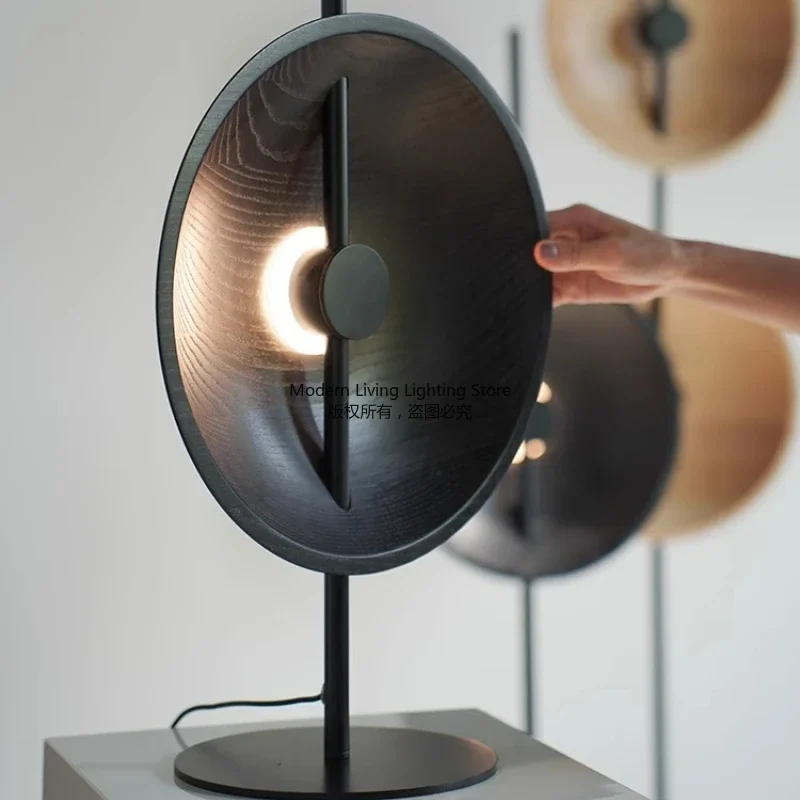
Frequently Asked Questions: Arc Lamp Essentials
What’s the minimum space needed for an arc floor lamp?
Most arc lamps require at least a 14-16 inch (35-41 cm) diameter for the base, plus clearance for the full arc extension. For standard models, allow a minimum 5×5 foot (1.5×1.5 m) area including the base and arc extension.
Are arc lamps good for reading?
Yes, when properly positioned. The shade should be positioned to direct light over your shoulder onto reading material without creating glare. Look for models with adjustable arms and at least 400-600 lumens for comfortable reading.
How do I clean a fabric lamp shade?
For routine maintenance, use a vacuum with a soft brush attachment. For spot cleaning, use a mild soap solution applied with a clean cloth, working in gentle circular motions. Allow to air dry completely before using the lamp again.
What bulb type works best in arc floor lamps?
LED bulbs are generally ideal, offering energy efficiency, long life, and minimal heat production. Look for bulbs with 2700-3000K color temperature for warm, inviting light, and consider dimmable options for flexibility.
How do I ensure my arc lamp won’t tip over?
Choose a lamp with a weighted base appropriate for its arc length—longer arcs require heavier bases. Position the base away from high-traffic areas, and ensure the weight is properly distributed according to manufacturer guidelines.
Can arc floor lamps work with smart home systems?
Many modern arc lamps offer smart home compatibility either built-in or through smart bulbs. Look for lamps with WiFi or Bluetooth connectivity, or those compatible with smart plugs if you want to integrate with systems like Google Home, Alexa, or Apple HomeKit.
Understanding the benefits of arc floor lamps helps you determine if this distinctive lighting style is the right choice for your specific needs and space requirements.

